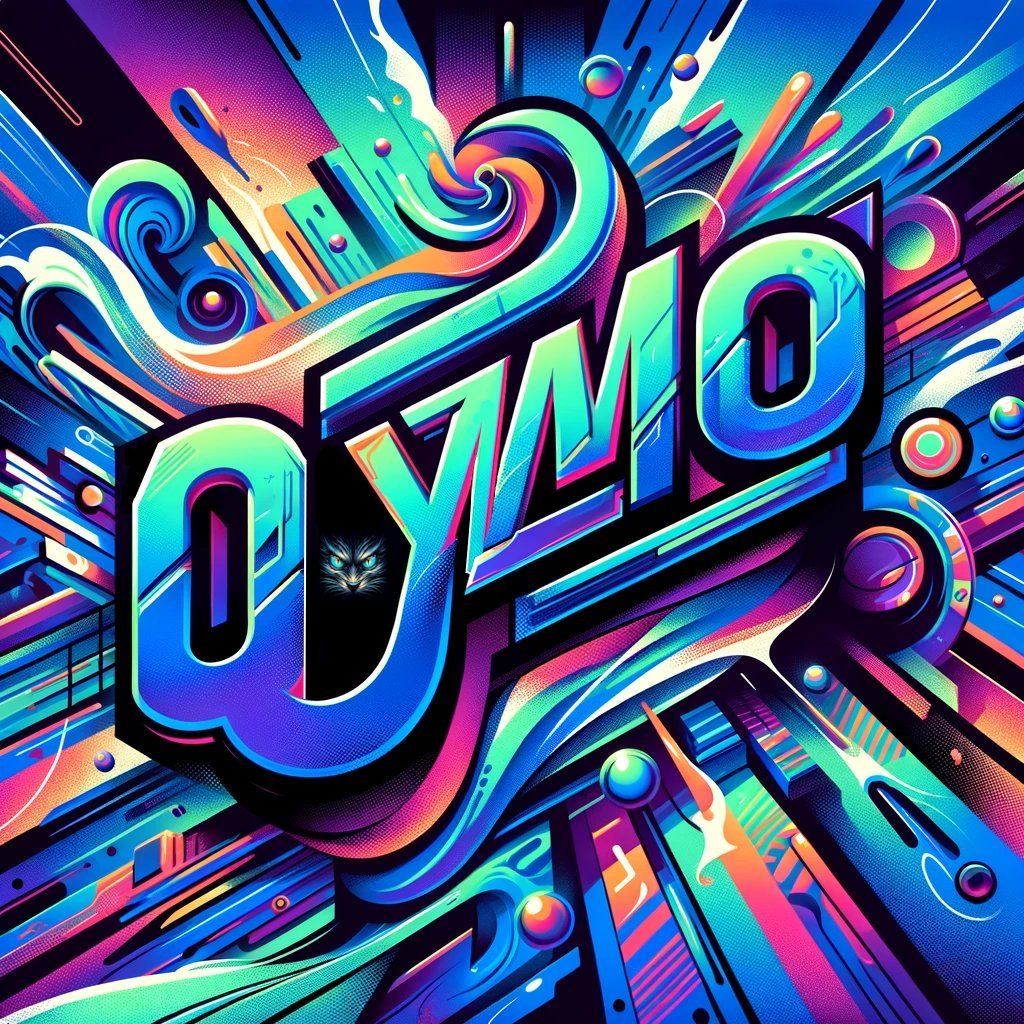I hate Microsoft and Windows, I want to choose better AND more importantly, see what all this fuss about Linux being awesomest is about
Cachyos, I swapped from windows with it, og dualbooted, ended up never wanting to open windows agaun
You cant really go wrong, de is more what decides the desktop experience, like theming/look ,etc. Kde plasma, gnome, cinnamon, xfce , etc. or tiling managers like hyprland (id stick to des for now coming from windows)
Ive mostly tried plasma and gnome Kde plasma is windows on steroids, customizable and snappy, tons of settings, most customization built in and not reliant on extensions
Gnome is like chromeos/macos futuristic opinionated, I like it a lot with extensions, slightly better than kde plasma with a lot of extensions imo
Cinnamons like closer to a simple windows experience
xfces lightweight but I think plasmas caught up there?
Deepin and elementary have unique des I think, and pop os with cosmic in alpha
They all come with different preinstalled apps, which are a mix of os and de dependent, like mint with cinnamon may use nemo for files, cachyos with gnome may use nautilus, but I like nemo so on cachyos with gnome I have nemo installed and set as the default.
Kden lives technically kde app, gimp is based off gtk, and so on, but yeah you basically pick a starter for yourself based on what you priortize, I like gaming so cachyos helps me grab packages id otherwise not know about, makes it easy to tweak scheduler, kernel, etc. setup btrfs snapper support and pick different bootloaders grubs, refined, limine, etc.
There are other distros meant to be closer to windows by default, with their theming, de, app picks, etc. just look around distrowatch
Ubuntu is an alright first pic, id prob reccomend something fedora based instead since I prefer flathub/flatpak to the snap store, bazzite if you game, imo the best default app store bazaar (can dload anywhere I have it on cachyos but it may be hard to figure out at first)
Ubuntu, Ubuntu is fine, it gets hate but tbh it’s fine. It’s well supported, issues getting fixed and there’s plenty of info on how to fix stuff when you inevitably find something that doesn’t work.
Put Linux Mint on an USB thumbdrive and play with it until you are comfortable. Be wary it would be somewhat slower than a system installed on the laptop’s drive.
Then, if it is a spare laptop, go ahead and install it. Avoid dual booting, it is more hassle than worth at this stage in your journey. Disable secureboot before installing, or Windows will try to hijack the laptop. You can always re-enable it later if you really want to, but it’s such a bad implementation currently that it doesn’t actually provide much security.
Alternatively: if all you want is to use the computer, without having to worry about the technical details of managing an OS. Try something like Bazzite (for gaming) or Aurora (general productivity) instead. They just work and will (practically) never break.
Mint has so many drawbacks these days and so few advantages that I wouldn’t recommend it anymore.
Sadly.
I installed it and it’s running. Even plays games well.
Are these drawbacks that anyone would care about if they’re not a Linux geek?
If you’re a gamer with variable refresh rate monitors that differ, you’ll really want Wayland. As others have said Mint is good and easy, but not the most up to date and lacks features compared to Windows. I’m liking Fedora KDE spin for this reason.
How do you mean? I recently installed it and now I’m curious. What other distro would you recommend instead?
Mint is often “slow” in the adoption of things. It has its benefits,as this makes it fairly stable. But it also has its drawbacks - hardware support is a hit or miss, especially with newer hardware (it either works out of the box or you are screwed for years), has still not adopted wayland fully and will likely not be there before Mint23(2026).
That is all fine and dandy if you can live with that. If it works and does what you need it to do you will have very little issues with it. That’s what once set Mint apart, it simply worked when others did not and was bloody easy to set up.
Nowadays that’s no longer something other distributions don’t manage to do. I have recently switched my family and company to fedora(and some Alma/Rhel VMs on my Proxmox cluster) from Windows and tbh: It was as smooth as fuck and as smooth as Mint is, but has a lot of advantages in terms of “up-to-dateness” of a lot of things. (And KDE Plasma is indeed nice)
(We only have two issues that are more KDE based and less Fedora based and that are already being addressed - and only apply to domain networks)
There are other Debian based distributions that are similar as well.
In other words: Mint has, in my eyes, lost it’s unique selling point a bit over the last years. Even my most “tech illiterate” employee found herself “at home” in Fedora (as she would have done in Mint), something that was not the case when she trialed Linux 4 years ago.
So in the end: If you are happy with Mint,go with Mint. Be aware of the downsides. If they don’t bother you then it’s perfect. If it does, well,there are alternatives.
I see now, thank you!
Fedora has 2nd best repos compared to Arch/AUR in my opinion, but because Fedora is actually stable I use it instead to avoid headaches. As much as I miss pacman, Fedora just works. Flatpaks and Appimages fill in the blind spots.
What Desktop Environment or Window Manager to use is your call. I spend most time in my livimg room vs at my actual desktop so I like GNOME it’s couch friendly. Desktop I’m KDE. Boring I guess but I’m too lazy to fuck with ricing.
My recommendation is, don’t go with any of the distros you haven’t heard of before.
At some point, you will need to google “<distroname> how do I…” many many times. It is much better if you have something popular and common to do that in.
I have tried to approach this off the basic principle of “Oh, it’s basically Fedora!” on a few distributions but it doesn’t work as reliably as you’d like.
Can’t go wrong with Linux Mint
Mint is a great choice for windows converts. The UI closely matches what you are used to.
Mint and Ubuntu are both fine and have a huge support base so you’ll always find help.
I’ve been on Linux for going on 10 years, went through just about all the major and moderate distros out there and the past two years I’ve just been using mint on my study laptops (in particular LMDE for stability) and it’s completely fine for me.
Seconding mint. I’ve heard it referred to as “Ubuntu for people who don’t want to admit they’re running Ubuntu”, but the fact of the matter is that Mint has consistently been, for the last 15 years, the distro that has worked best out of the box on my daily driver laptops.
I use several distros for various purposes, but Mint is my go-to for general purpose everyday use.
Plus if you want to just check it out, the install USB can be used as a live OS without any installing anything to the disk. It probably won’t handle GPU drivers and the like, but it should be enough to just get a quick glance at what it’s about.
Mint didn’t work at all on my last desktop. I should have tested more with the live disk before installing.
The mint discord I found was pretty helpful though.
If you mainly game: Nobara (and I get less and less convinced of that - Fedora original is almost as good by now) If you mainly work on it: Fedora.
If you need broad support: Ubuntu. Sadly. But read up on the drawbacks.
imo every single beginner friendly distro all have the same problem. They are, for some extent, easier to use than others, until they’re not, at which point you find yourself digging through documents and forums or asking ChatGPT to break the system.
After few years of that dance, I found Linux Mint to be the easiest and Fedora KDE to be the nicest.
They are, for some extent, easier to use than others, until they’re not, at
The thing is that many well integrated distro have enough user friendly features to not need to go in the until they’re not part. If the most complicated thing you do is install a standard package and a printer, you won’t need to learn much.
Obviously, if you want to program a driver to control a nuclear reactor, it’s another story.
Linux Mint and PopOS.
The most important decision as a new Linux user is the desktop environment, the most similar desktop environment to the Windows desktop are KDE Plasma and Cinnamon. This means your best options are:
- Linux Mint (Cinnamon): They are the creators of the Cinnamon desktop environment and will be the default on installation.
- Kubuntu (KDE Plasma): This is Ubuntu’s official KDE Plasma flavour, it comes with everything as usual just different desktop.
- Fedora (KDE Edition): Same story as Ubuntu here, only that with Fedora’s own packages and environment.
First I would check if the hardware is compatible (99% of the time is). Then I would check what software you need and/or want and check if it is available at these distros, and get familiar on how to install the software packages (either with their respective app stores or in the command line).
There is a lot to learn but with these distros you can just install, forget and simply keep using them for eternity.
The last and more important tip I have is to not to worry about the sea of options out there, you will not be missing anything huge by picking one or the other. Which is how most of new users feel (I did in my time).
Hope you have a great Linux journey mate!
Agree with everything you’ve said. I would add OpenSUSE Tumbleweed. I tried all the KDE distros you mentioned and OpenSUSE is what really got me using Linux longterm.
Also, I didn’t know about this at the time, but now that I look back I wonder if Tuxedo OS would have been the best starting option for me. I wonder why Tuxedo OS hardly gets mentioned.
I’ve been using tumbleweed for awhile and I would be hesitant to suggest it to a new user unless they are comfortable with solving technical problems and learning how to take advantage of its recovery features. (Such as btrfs snapshots)
It’s got some out of the box issues where you’re expected to research and understand how to solve them. (Like many other distros) Where I’ve found Ubuntu just simply works or its just a few clicks away from working.
Things like the backlight on laptops not responding, codec support (needing to use packman repo), Nvidia support (has improved significantly over the years).
And with the nature of tumbleweed there’s so many frequent updates, plus you’re expected to understand how to resolve zypper package concerns.
Great OS, most issues I’ve had, have been solved. I am currently battling with it to properly support my 9070xt /w rocm. (Mostly working but unstable)
I specifically bought an AMD GPU when building my PC. So I’ve successfully avoided all this Nvidia driver nonsense.
Mainly I would steer you away from any distro that uses Gnome. Very short answer as to why: most desktop environments bear some resemblance to Windows, Gnome is more like MacOS with a concussion.
So what distro is Mac without a concussion? I dont want windows
Ubuntu?
Probably the closest to “Mac without a concussion” would probably be ElementaryOS with the Pantheon desktop, but I don’t really recommend it.
Linux is modular in ways you’re probably not used to. Windows looks like WIndows and that’s it, you can’t just uninstall the taskbar and install someone else’s taskbar. In Linux you can do pretty much exactly that. The GUI is a separate system that sits on top of the OS like Windows ran on top of DOS back in the 90’s and at airports today. There are several Desktop Environments (DEs) you can choose from.
For example, if you go to Linux Mint’s website, you will find it offered in three main flavors: Cinnamon, MATE and xfce.
The vast majority of DEs you’ll find in Linux are set up out of the box the way Windows is, in terms of basic UI elements. Most have a panel at the bottom with the application menu on the left, a window list next to that or centered, and system tasks and the clock on the right. A window has the minimize, maximize and close button at the top right, etc. Stuff you have muscle memory of using.
Gnome deliberately does things like that differently I think out of a sense of grudge. I used to hear Linux newcomers say things like “I tried Linux for a few hours and found you can’t even rename a file. Like it’s impossible to rename a file. Linux is completely useless.” And I didn’t understand how it was they could come to such a bafflingly dumb conclusion until I tried using Gnome and caught myself saying the same things.
Gnome also deliberately doesn’t implement a lot of features because they expect you to use the terminal for them. Other DEs like Cinnamon and KDE are actually finished.
Distros don’t define the UI.
That’s the desktop environment’s work. Many distros will look and feel exactly alike, because they use the same DE.
These are:
- GNOME
- KDE
- Cinnamon
- a long list of etceteras.
GNOME is their own thing, with very opinionated and authoritarian devs. They are not very flexible in their design and development philosophy. That said, Gnome is a very good and quality DE that does have customization, but is also very different to everything else UX wise.
KDE Plasma is very Windows like, because their thing is to be extremely flexible and customizable. But, with sane defaults that look like Windows as closely as possible. So it is very familiar out of the box, though it can be made to look and work into very unique ways. It is also very good and quite polished, aiming to have virtually everything into a GUI or menu, minimizing the need for terminal commands.
Cinnamon is Linux Mint’s continuation of what Gnome used to be like. Which means that it is very similar to pre-Windows 10 but with modern quality of life upgrades and functionality.
Most distros will use one of the first two, and Mint champions it’s own Cinnamon. Other DE’s are for more specialty or niche distributions.
Very few DE’s capture the macOS experience. Mostly because there’s little interest on it from the crowds that use Linux, so they get abandoned quickly. The closest thing currently is Budgie, which had died for a while, but is now revived by a different group of developers.
Gnome is actually very solid. Its a great desktop environment, it just works in a specific way that takes some getting used to. A good out of the box gnome experience would be fedora.
People will not recommend it though, since desktop environments that mimick windows are easier to get used to for new users, like linux mint with cinnamon, or any KDE default distro.
The previous comment sais it’s like Mac is with a concussion. It is an apt comparison because like MacOS gnome is very clean and minimal, but its still very different in its workflow. Giving macOS switchers quite a headache.
Any of the distros branded as beginner-friendly will do. It doesn’t really matter. Don’t get analysis paralysis.
Choose one and go for it. Use it for one whole week, and ask questions. Then decide if you want to keep it or look for something different.
Note that the desktop you choose is an important choice. I recommend KDE, but you can try different ones. Most major distros offer a variety, so you don’t have to install a different distro to get a different desktop.
Experiment and have fun!
I tried Linux Mint Cinnamon but swapped to Fedora Workstation. I like Fedora Workstation, it’s very well animated and smooth.
But I think I heard in another YouTubers review that on her laptop it wasn’t as battery efficient as other distros. But I like it on my desktop pc.
I know you want to move away from Windows, but trying to choose something completely different might be a bad idea, you’re already unfamiliar with the system also being unfamiliar with the way to interact with stuff might be a bit too much. That being said I don’t think any of the largest DE mentioned would be a problem, so look at pictures and choose on what you think looks best.
As for distro lots of people recommend Mint and I’ll back that up, although I haven’t used it in years it was my go to distro to give new users as it was very plug and play.
And the two recommendations I always give new users are:
-
Keep
/and/homein separate partitions, this allows you to format your system, change distro, or whatever without losing your personal files. -
As much as possible use the package manager, googling a program and downloading an installer is 99% of the time the wrong way to install stuff and a major cause of problems for new users.
A note about the package manager: Mint, and most other distros have a GUI software centre. Kinda like an app store. So you can search for an app there, find it, and install it.
Linux mint also comes with flatpak but apps installed from the software centre default to the .deb version.
When you mention putting the
/homeelsewhere, that’s something I do when setting up a distro install? I can’t recall from the last time I did a system install of mint. Sounds extremely helpful so I would like to do it next time
Yes it is. I mean, you should be able to do it later, but if you have to ask how it might be better not to risk it since that would involve resizing your root partition. If however you have a secondary disk you want to use for it it’s just a matter of adding a new entry to
/etc/fstab(which the UI installer in Mint and others allows you to do with a nice UI instead of having to write the file manually). Although bear in mind that mounting a disk on top of an existing folder will mask the contents of the folder, so you won’t be able to access the files that were there before. Long story short you can move the files over to the new disk first, them add the fstab entry and it should work, for future installations you can set this during the installer, same way you create a different partition for/boot, in Linux partitions are mounted to folders and they work as if they were in that location for all intents and purposes.
-
Zorin Linux is very Windows’ish (xp) :]









